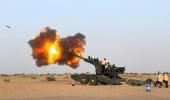In what would be a significant capability boost for defence forces, India is planning to develop three new spy planes that would be capable of keeping a close watch on enemy communications and carry out long-range surveillance missions.

The project would be carried out indigenously and the majority of the technology and equipment to be used would be made in India.
The proposal for getting three new spy planes also known as signal intelligence and communication jamming system aircraft is at an advanced stage and is expected to get clearance in next week, defence officials told ANI.
The project is being developed by the Defence Research and Development Laboratory and the Indian Air Force where they would be using an Airbus-319 class aircraft, they said.
The agencies concerned would be issuing a tender to the aircraft manufacturers to buy the platform for the aircraft, the officials said.
The aircraft requirement has been there for a long time and the specifications have now been finalised for the project, they said.
The project is being carried out by the Centre for Airborne Studies which is working on multiple development projects including the Airborne Early Warning and Control systems which is the next generation of the existing Netra aircraft which would be the AEW&C Netra Mark1A.
ANI had reported about the Indian Air Force's plans to bring the proposal for buying six more AEW&C aircraft based on the Embraer aircraft to the Defence Acquisition Council in September and November last year.
The Indian Air Force also has plans to develop an indigenous Intelligence, Surveillance, Target Acquisition and Reconnaissance (I-STAR) aircraft, Airborne Early Warning and Control Mark 1A aircraft on Embraer legacy jet plane platform, AEWC Mark 2 on Airbus 321 jets for the Indian Air Force.
CABS is also developing the Medium Range Maritime Reconnaissance project of the Indian Coast Guard and Indian Navy.
Indian Coast Guard chief director general Rakesh Pal had recently stated that the C-295-based maritime surveillance aircraft would give the force a strong indigenous capability to keep an eye on the Indian territory.











 © 2025
© 2025